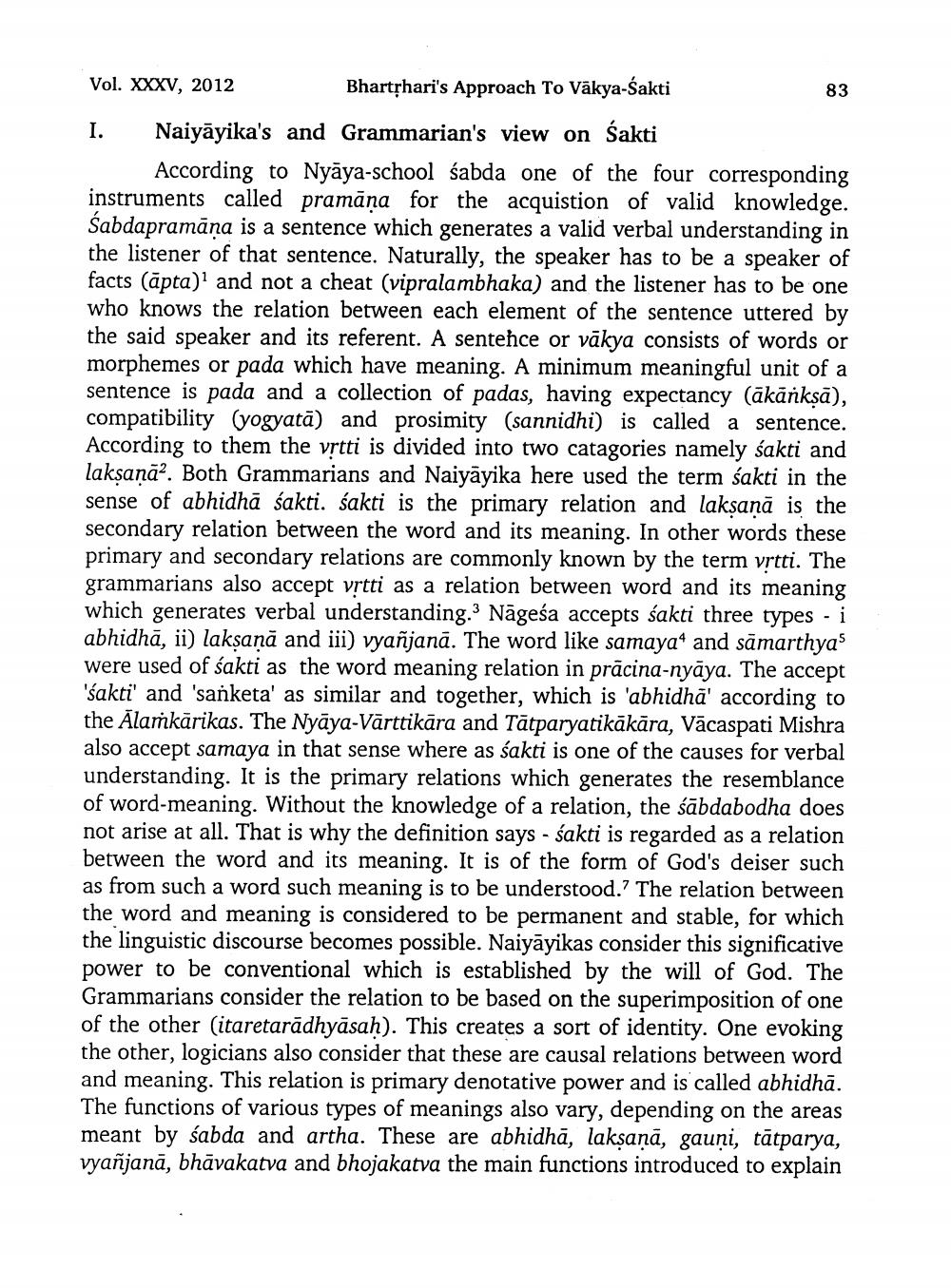________________
Vol. XXXV, 2012
Bhartphari's Approach To Vākya-Śakti
83
1. Naiyāyika's and Grammarian's view on Śakti
According to Nyāya-school śabda one of the four corresponding instruments called pramāna for the acquistion of valid knowledge. Sabdapramāna is a sentence which generates a valid verbal understanding in the listener of that sentence. Naturally, the speaker has to be a speaker of facts (āpta) and not a cheat (vipralambhaka) and the listener has to be one who knows the relation between each element of the sentence uttered by the said speaker and its referent. A sentence or vākya consists of words or morphemes or pada which have meaning. A minimum meaningful unit of a sentence is pada and a collection of padas, having expectancy (ākānksā), compatibility (yogyatā) and prosimity (sannidhi) is called a sentence. According to them the vrtti is divided into two catagories namely sakti and laksaņā?. Both Grammarians and Naiyāyika here used the term sakti in the sense of abhidhā Śakti. śakti is the primary relation and lakṣaṇā is the secondary relation between the word and its meaning. In other words these primary and secondary relations are commonly known by the term vrtti. The grammarians also accept vrtti as a relation between word and its meaning which generates verbal understanding. Nāgesa accepts sakti three types - i abhidhā, ii) laksana and iii) vyañjanā. The word like samaya4 and samarthya were used of śakti as the word meaning relation in prācina-nyāya. The accept 'sakti' and 'sanketa' as similar and together, which is 'abhidhā' according to the Alaskārikas. The Nyāya-Vārttikāra and Tātparyatikākāra, Vācaspati Mishra also accept samaya in that sense where as sakti is one of the causes for verbal understanding. It is the primary relations which generates the resemblance of word-meaning. Without the knowledge of a relation, the śābdabodha does not arise at all. That is why the definition says - sakti is regarded as a relation between the word and its meaning. It is of the form of God's deiser such as from such a word such meaning is to be understood.? The relation between the word and meaning is considered to be permanent and stable, for which the linguistic discourse becomes possible. Naiyāyikas consider this significative power to be conventional which is established by the will of God. The Grammarians consider the relation to be based on the superimposition of one of the other (itaretarādhyāsah). This creates a sort of identity. One evoking the other, logicians also consider that these are causal relations between word and meaning. This relation is primary denotative power and is called abhidhā. The functions of various types of meanings also vary, depending on the areas meant by sabda and artha. These are abhidhā, laksanā, gauņi, tātparya, vyañjanā, bhāvakatva and bhojakatva the main functions introduced to explain




